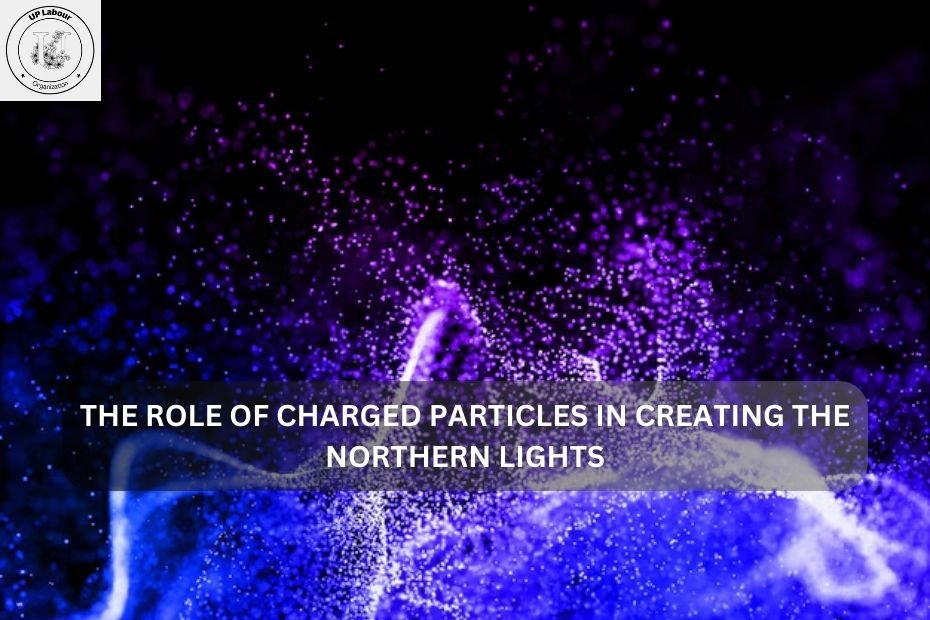If you’ve ever looked up at the night sky and seen the mesmerizing dance of colors known as the Northern Lights, you may have wondered what causes this natural wonder. The vibrant hues of green, purple, and pink that ripple across the sky are not just random displays of light; they are the result of complex interactions between charged particles from the sun and the Earth’s atmosphere. Let’s break down how these charged particles create the breathtaking phenomenon we know as the Aurora Borealis.
What Are the Northern Lights?
Before diving into the science, let’s clarify what the Northern Lights are. The Northern Lights, or Aurora Borealis, occur primarily in the polar regions. They are a natural light display created when charged particles from the sun collide with gases in the Earth’s atmosphere. This results in beautiful light shows that can range from faint glows to brilliant, swirling curtains of color.
The Sun: Our Source of Charged Particles
To understand how the Northern Lights form, we must start with the sun. The sun is an enormous ball of gas, primarily composed of hydrogen and helium, undergoing nuclear fusion at its core. This process generates energy and creates solar winds—streams of charged particles that are ejected into space. These particles mainly consist of electrons and protons, which are both types of charged particles.
Solar activity isn’t constant; it varies in intensity over an approximately 11-year cycle known as the solar cycle. During periods of heightened solar activity, known as solar storms or coronal mass ejections (CMEs), large amounts of charged particles are released into space. When these particles travel towards Earth, they can have profound effects on our planet’s atmosphere.
The Earth’s Magnetic Field: Our Protective Shield
Earth is surrounded by a magnetic field that acts like a protective shield against these incoming charged particles. This magnetic field is generated by the motion of molten iron in the Earth’s outer core. It forms a magnetic “bubble” called the magnetosphere, which extends far into space. When solar winds reach Earth, most of the particles are deflected by the magnetosphere, but some manage to penetrate it, especially near the polar regions.
The areas near the magnetic poles are where the magnetic field lines converge and allow charged particles to enter the atmosphere. This is why the Northern Lights are most commonly seen in places like Alaska, Canada, and Scandinavia.
How Charged Particles Create Light
When the charged particles from the sun collide with atoms and molecules in the Earth’s atmosphere, they transfer energy to these particles. Most commonly, the gases involved are oxygen and nitrogen. Here’s how the process works:
- Collision: When the charged particles from the solar wind enter the atmosphere, they collide with gas molecules.
- Excitation: These collisions excite the gas molecules, meaning that they gain energy and move to a higher energy state.
- Emission of Light: After a very short period, these excited molecules return to their normal state, releasing the energy they absorbed in the form of light. This is similar to how a neon sign works, where electrical energy excites gas inside the tube, producing light.
- Different Colors: The type of gas and the altitude at which the collisions occur determine the color of the light produced. For instance:
- Oxygen at high altitudes (around 200 miles) can produce red and purple hues.
- Oxygen at lower altitudes (around 60 miles) typically emits a bright green color, which is the most common hue seen in the Northern Lights.
- Nitrogen can give off blue or purple colors, especially when it interacts with the charged particles.
The Dance of the Lights
As the charged particles continue to collide with atmospheric gases, they create a dynamic light display. The shapes and patterns of the lights can vary, creating arcs, curtains, and even spirals. The movement is influenced by the Earth’s magnetic field, which causes the lights to appear to dance across the sky.
Sometimes, during strong solar storms, the Northern Lights can be seen further south than usual. This can result in spectacular light shows in areas that typically don’t experience the aurora, leading to breathtaking experiences for many.
Observing the Northern Lights
If you’re hoping to catch a glimpse of the Northern Lights, here are a few tips:
- Location: Head to areas near the poles. Alaska, Canada, and parts of Scandinavia are ideal spots.
- Timing: The best time to see the Northern Lights is during winter months when the nights are longest and skies are darkest.
- Weather: Clear skies are essential. Cloud cover can block your view, so keep an eye on the weather forecasts.
- Stay Away from City Lights: Light pollution can make it difficult to see the aurora. Try to find a dark spot away from artificial lights.
- Be Patient: The Northern Lights can be unpredictable. Sometimes you’ll have to wait for hours, so dress warmly and enjoy the peaceful surroundings.
The Cultural Significance of the Northern Lights
Beyond their stunning beauty, the Northern Lights hold significant cultural meanings for various indigenous peoples. Many tribes have rich folklore and legends associated with the auroras. For example, some Native American tribes believe the lights are the spirits of ancestors or other celestial beings. In contrast, the Sámi people of Northern Europe have their own stories that reflect their connection to the land and the natural world.
These cultural narratives add depth to the scientific understanding of the Northern Lights, reminding us that they are more than just a visual spectacle; they are woven into the fabric of human history and spirituality.
Conclusion
The Northern Lights are a captivating manifestation of the interplay between solar activity and Earth’s atmosphere. Charged particles from the sun travel across space, collide with atmospheric gases, and create a stunning light display that has fascinated humanity for centuries.
From the science behind their creation to the cultural stories that enrich their meaning, the Aurora Borealis continues to inspire awe and wonder. Whether you’re lucky enough to witness them in person or simply appreciate them from afar, the Northern Lights remind us of the incredible natural forces at play in our universe. So next time you gaze up at the night sky, remember that you’re witnessing a cosmic dance of charged particles and atmospheric gases, a beautiful reminder of our planet’s connection to the sun and the wider cosmos.

